Dancing with horses for three decades
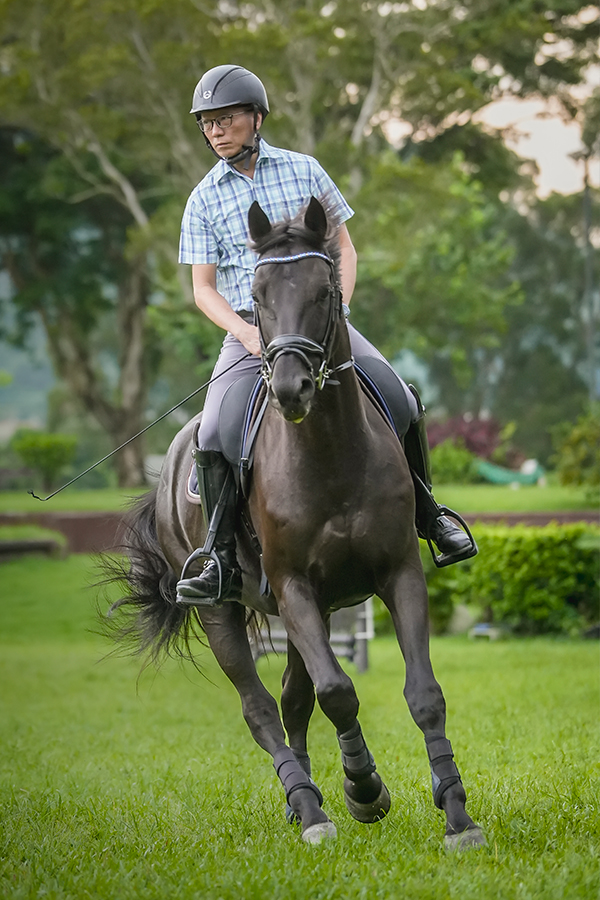 In the dressage arena, the Hospital Authority’s Chief Manager of Nursing Dr Danny Tong signals to a horse to trot or perform a half-pass, and it follows his instructions immediately. Back in the office, Danny is responsible for managing the nurses in all Hong Kong public hospitals and ensuring they provide a professional service to patients. Danny has been a horse-riding enthusiast for 34 years, as many years as he has worked in nursing. He says the sport makes him constantly reflect to improve his techniques and believes riding horses also inspires him in his work as a leader. Riding has become an integral part of his life.
In the dressage arena, the Hospital Authority’s Chief Manager of Nursing Dr Danny Tong signals to a horse to trot or perform a half-pass, and it follows his instructions immediately. Back in the office, Danny is responsible for managing the nurses in all Hong Kong public hospitals and ensuring they provide a professional service to patients. Danny has been a horse-riding enthusiast for 34 years, as many years as he has worked in nursing. He says the sport makes him constantly reflect to improve his techniques and believes riding horses also inspires him in his work as a leader. Riding has become an integral part of his life.
Danny took up riding after taking his nursing licensing examination. “I read in a magazine that there was a place in Shenzhen where people could ride horses,” he recalls. “I went there with my classmates and a neighbour, and it was very relaxing.”
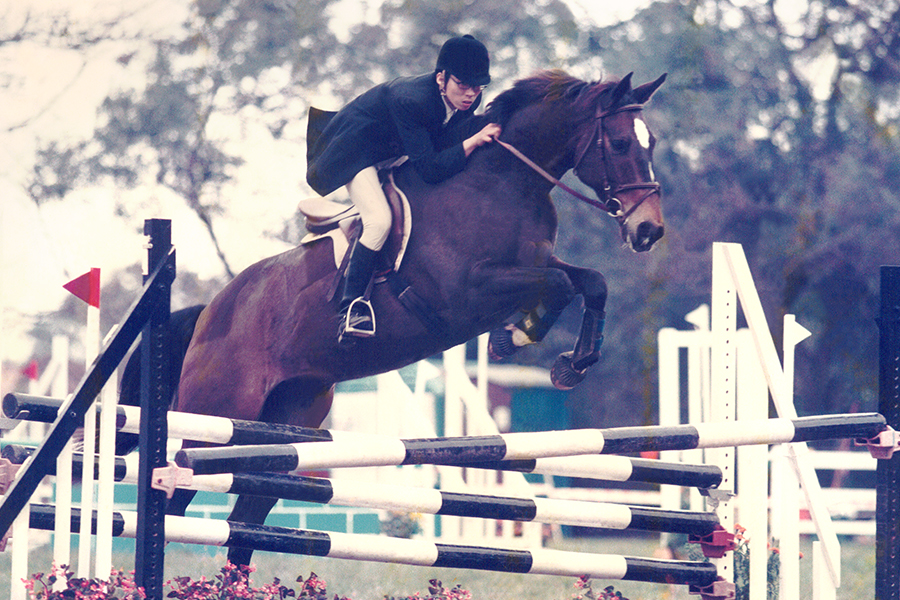 After several visits, Danny took up the sport seriously and competed in cross-country, show jumping, and dressage. After 10 years, recognising his strengths in dressage, he decided to focus on it. “Most importantly, I will still be able to do dressage when I am in my 80s,” he jokes.
After several visits, Danny took up the sport seriously and competed in cross-country, show jumping, and dressage. After 10 years, recognising his strengths in dressage, he decided to focus on it. “Most importantly, I will still be able to do dressage when I am in my 80s,” he jokes.
As well as being an accomplished rider, Danny is also a listed national judge. He was the official dressage commentator for the 2008 Beijing Olympics and was a TV commentator during the Paris Olympics as Deputy Senior Dressage Judge of the Hong Kong Equestrian Federation, China.
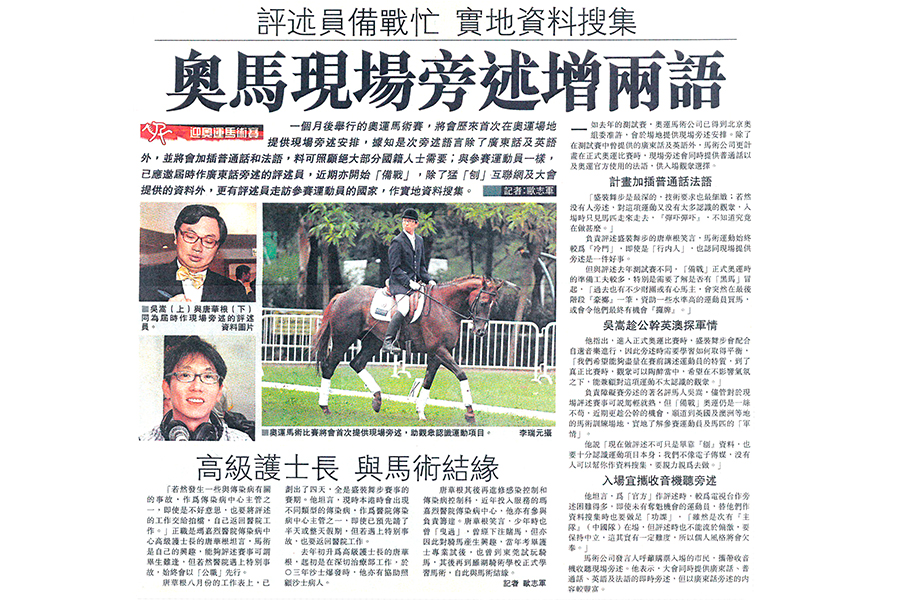 Dressage is often described as “horses doing ballet”. It takes its name from the French word “to train” and requires smoothness of movement that can only be achieved by a unique bond between human and horse. “The rider seems to not even make a slight movement, but the horse is able to read his mind and performs the movement accurately. This is the oneness of human and horse – movement showing they have mutual trust,” Danny explains, citing the example of Olympic champion Jessica von Bredow-Werndl who rode even while pregnant and has a remarkable bond with her horse.
Dressage is often described as “horses doing ballet”. It takes its name from the French word “to train” and requires smoothness of movement that can only be achieved by a unique bond between human and horse. “The rider seems to not even make a slight movement, but the horse is able to read his mind and performs the movement accurately. This is the oneness of human and horse – movement showing they have mutual trust,” Danny explains, citing the example of Olympic champion Jessica von Bredow-Werndl who rode even while pregnant and has a remarkable bond with her horse.
From horsemanship to leadership
The attitude of a horse reflects the attitude of the rider, Danny believes. “Don’t blame your horse if it behaves badly – it is your own problem,” he says, citing the wisdom of the legendary horse trainer from ancient China Bo Le which he argues can be applied to both the dressage arena and the workplace.“Are your signals crystal clear when you are riding? Are there discrepancies? Does the horse know it is wrong?” he asks, adding that a rider must know how to use a whip when a horse does something wrong and reward the horse when it does something right. “What you can do is lead the horse, let it feel safe, and ensure its wellbeing. Then it will trust you,” Danny says.
Outside work, riding horses remains the passion of Danny’s life, and he makes time to go for a ride once or twice a week. He once even gave up driving because he decided it was too indulgent to have a car and a horse at the same time. The equestrian world is a fascinating one that requires constant learning, he says, adding with a laugh, “I am addicted to it.”
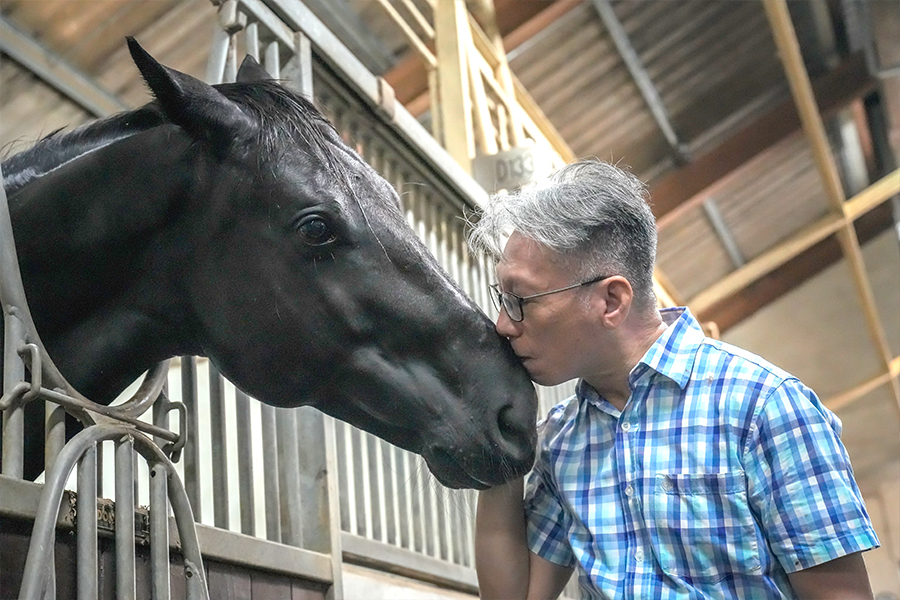
Did you know
There are signs that a horse is healthy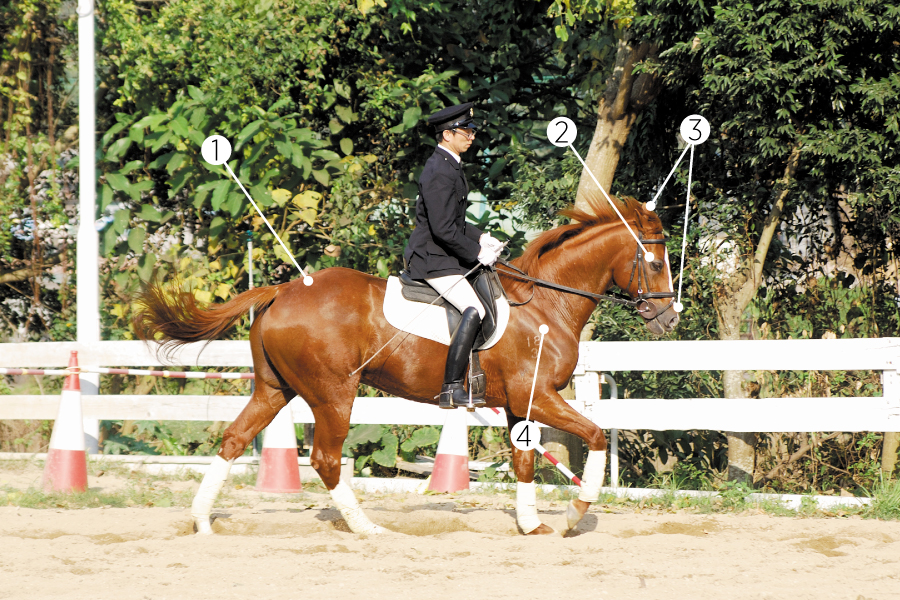
- Solidly-defined muscles
- Shining eyes
- Relaxed look
- Shiny coat
There is no such thing as a white horse
All white horses are grey horses getting old, when their hair becomes white. There is no such thing as a natural-born white horse.
Interview video